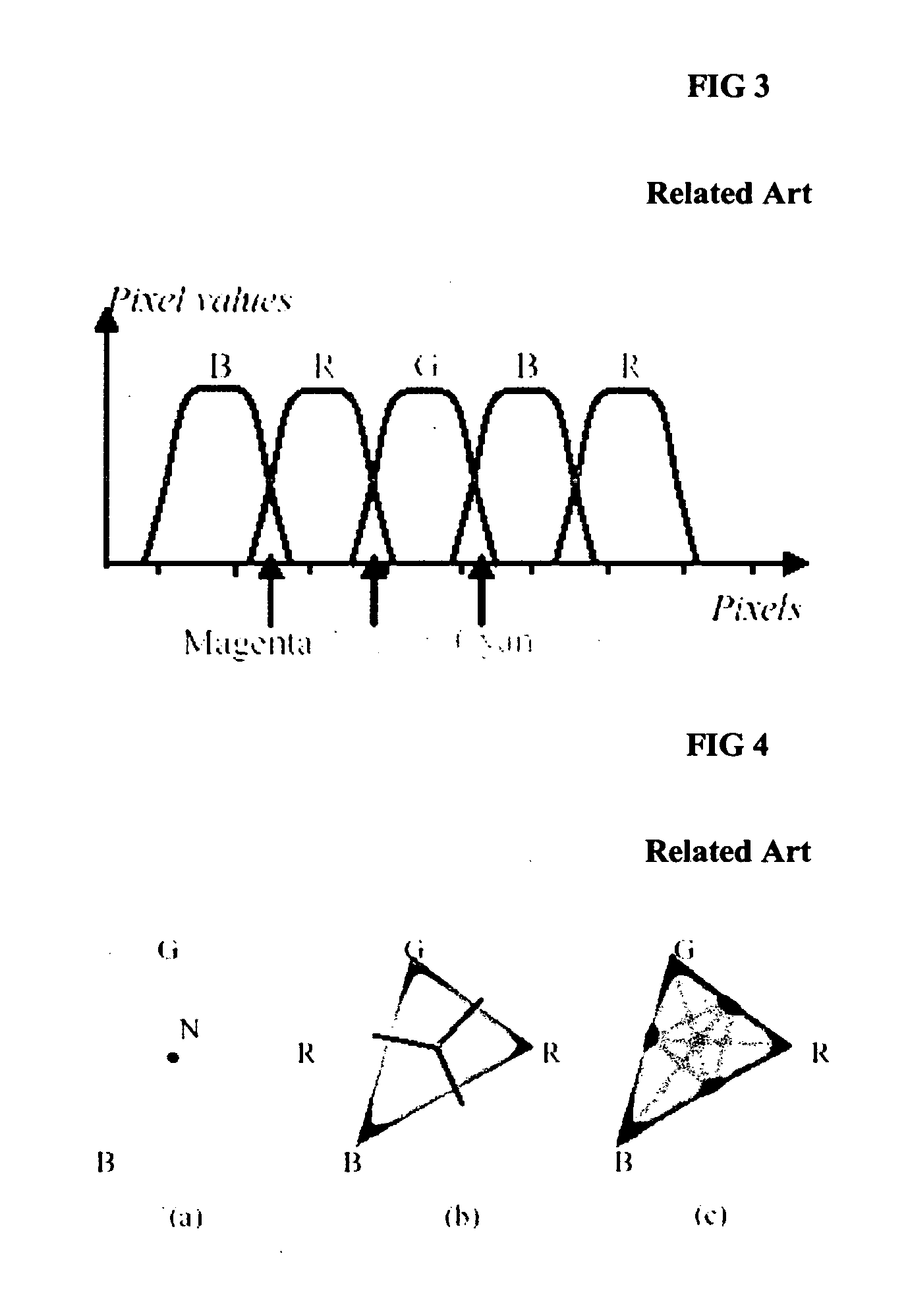Method for generating structured-light pattern
a structured light pattern and pattern technology, applied in the field of structured light pattern generation, can solve the problems of object surface color, nonlinearity, high sensitivity to system noise, and limited stripe width range resolution
- Summary
- Abstract
- Description
- Claims
- Application Information
AI Technical Summary
Benefits of technology
Problems solved by technology
Method used
Image
Examples
Embodiment Construction
[0029] Reference will now be made in detail to the preferred embodiments of the present invention, examples of which are illustrated in the accompanying drawings. Wherever possible, the same reference numbers will be used throughout the drawings to refer to the same or like parts.
[0030] In color structured-light, the most straightforward method of generating unique color labels for M number of stripes would be to assign M number of different colors. In this case, the color distances between the stripes are small and this simple scheme can be as sensitive to system noise and nonlinearity, such as the rainbow pattern, which is disclosed in J. Tajima and M. Iwakawa, “3-D data acquisition by rainbow range finder,” Proc. 10th ICPR, pp. 309-313, Atlantic City, N.J., 1990. A limited number of colors with substantial color differences are more desirable in this regard, but global uniqueness is hard to achieve due to the repeated appearance of a same color among M number of stripes, which i...
PUM
 Login to View More
Login to View More Abstract
Description
Claims
Application Information
 Login to View More
Login to View More - R&D
- Intellectual Property
- Life Sciences
- Materials
- Tech Scout
- Unparalleled Data Quality
- Higher Quality Content
- 60% Fewer Hallucinations
Browse by: Latest US Patents, China's latest patents, Technical Efficacy Thesaurus, Application Domain, Technology Topic, Popular Technical Reports.
© 2025 PatSnap. All rights reserved.Legal|Privacy policy|Modern Slavery Act Transparency Statement|Sitemap|About US| Contact US: help@patsnap.com



